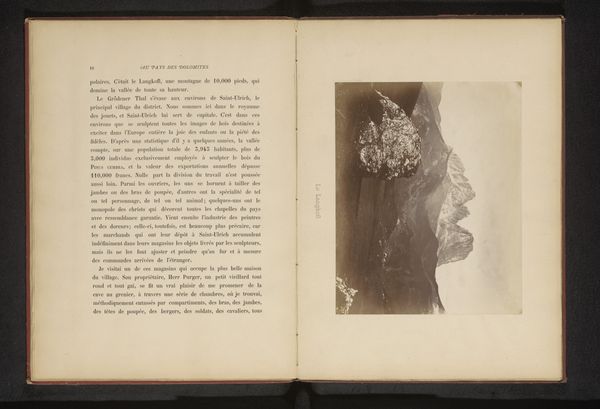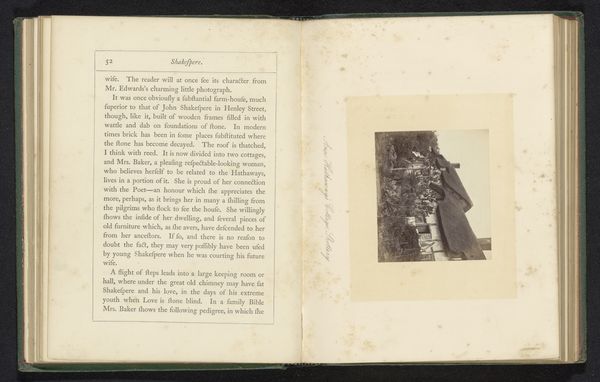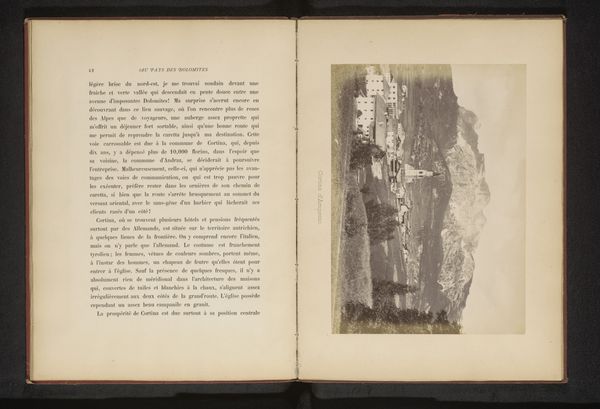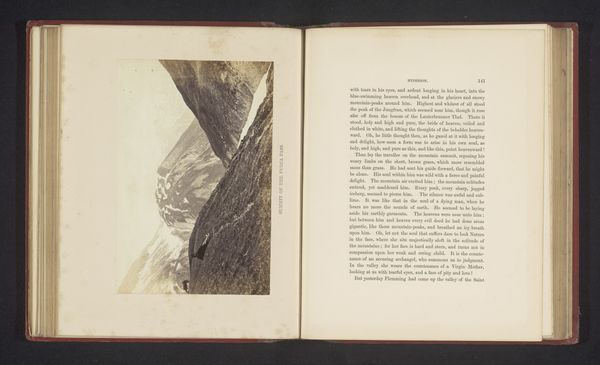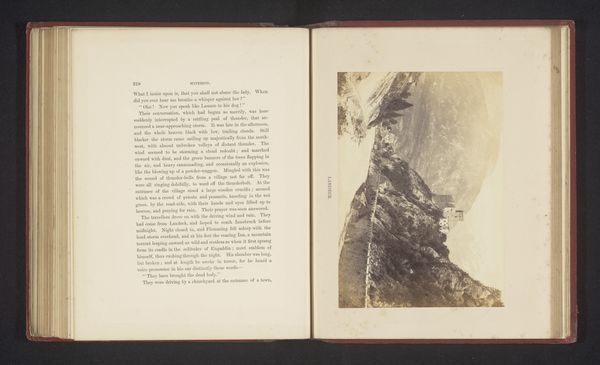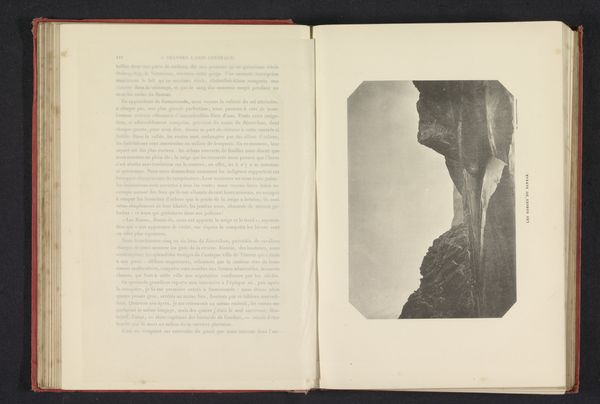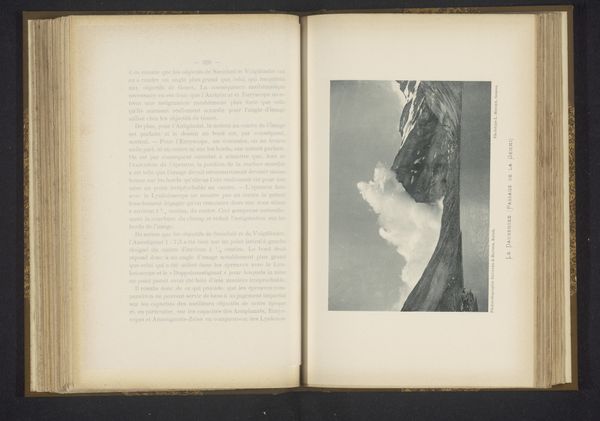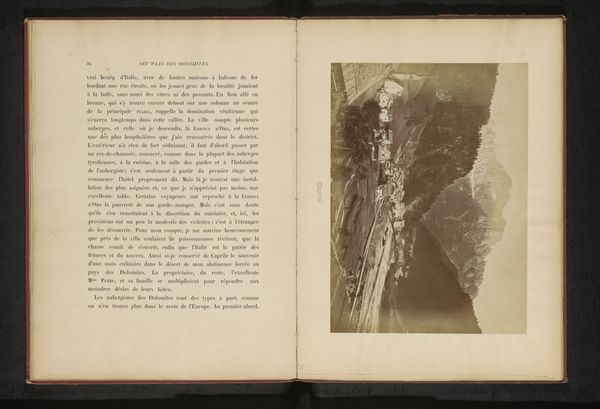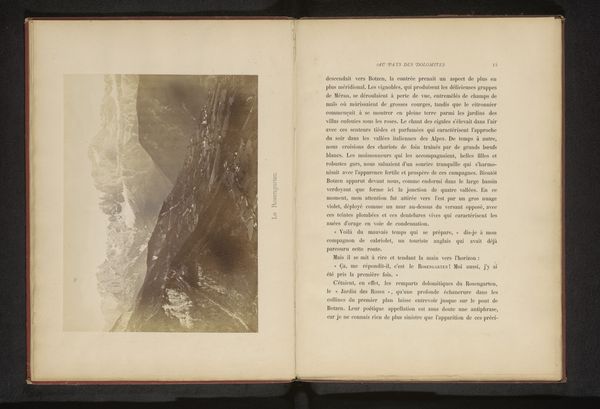
print, photography
# print
#
landscape
#
photography
#
mountain
Dimensions: height 133 mm, width 184 mm
Copyright: Rijks Museum: Open Domain
Editor: We're looking at an early photograph titled "Gezicht op de berg Marmolada in de Dolomieten, Italië," or "View of Mount Marmolada in the Dolomites, Italy," by Eugène Goblet d'Alviella. It's a print from before 1878, depicting a stark mountainside. What jumps out at me is how the mountain seems to both rise powerfully and also recede into the background, depending on how you look at it. What do you see in this work? Curator: I see a deliberate effort to capture not just the mountain's form, but its symbolic weight. Think about the cultural obsession with sublime landscapes in the 19th century. Mountains represented both spiritual challenge and the power of nature over humanity. The framing itself, embedded within a book, is crucial; it transforms a natural wonder into an object of study, a contained symbol. Do you see how the print quality lends a dreamlike quality to the scene? Editor: I do, almost like a memory fading at the edges. But why place so much emphasis on capturing nature's power? Curator: It’s more than just power. Consider the spiritual hunger of the era. Industrialization and urbanization were rapidly changing society. The unyielding mountain, captured through the burgeoning medium of photography, offered a powerful, almost timeless contrast to that perceived societal fragility. This image connects us to a deeper cultural narrative. Can you see that connection now? Editor: Yes, it’s becoming much clearer! It's a picture of a mountain but symbolizes cultural ideas, a cultural snapshot. I will have to ponder that more. Thanks! Curator: Indeed. Photography, in this context, wasn't merely recording, but actively shaping how we perceive and remember the world, how nature speaks to something beyond our immediate circumstances. A fascinating reminder of how images and symbols evolve over time.
Comments
No comments
Be the first to comment and join the conversation on the ultimate creative platform.
